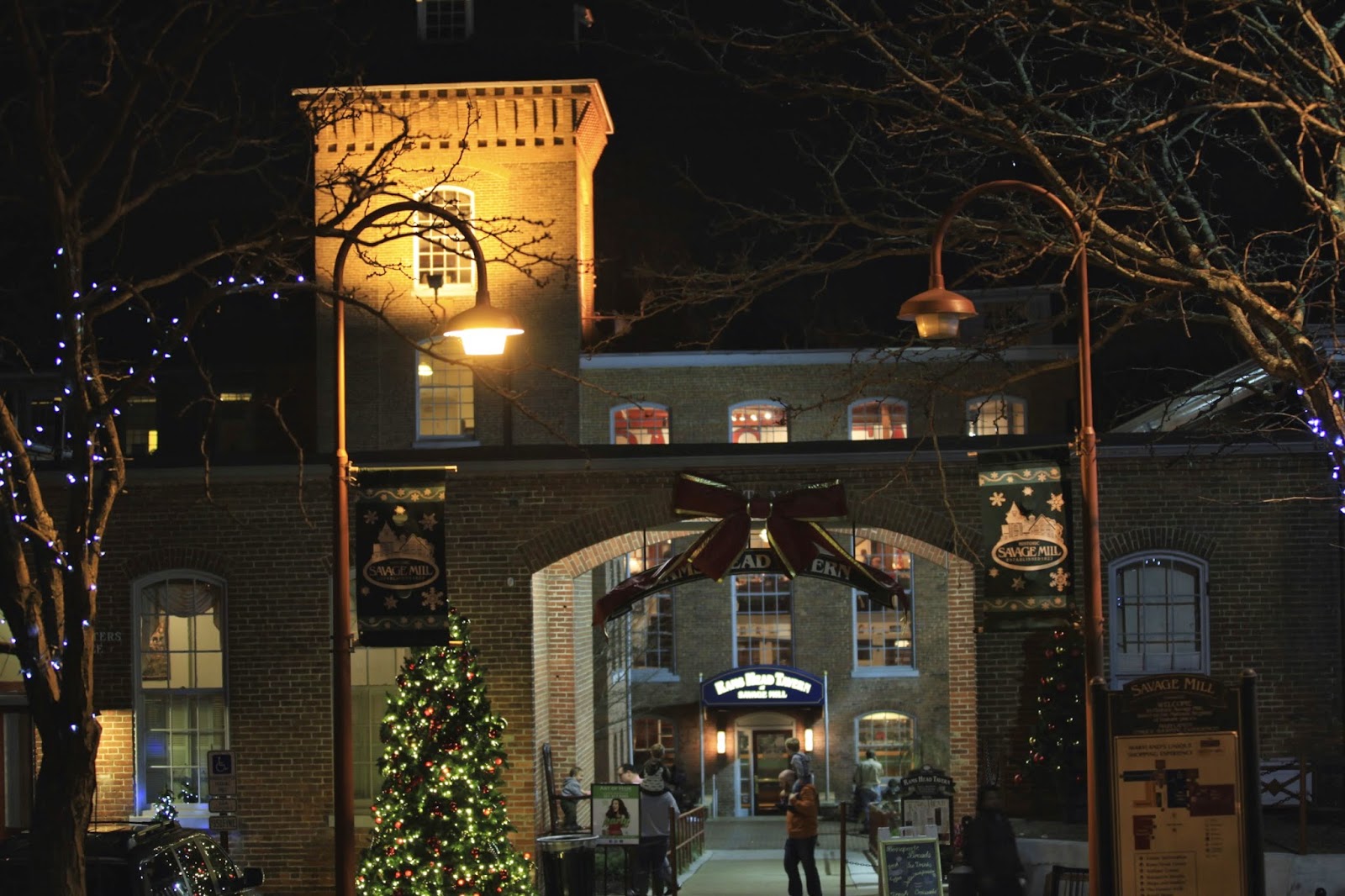It's an odd part of local history that when the fabric mills at Savage Mill closed down at the end of World War II, the town of Savage, MD briefly became a year-round Christmas Village that produced as much as one-third of all of the handblown Christmas ornaments sold in the US, including ornaments on the National Christmas Tree in 1948.
And, in a bit of self-referential promotional hype, the new proprietor Harry Heim declared that the town would be Santa's home south of the Mason-Dixon Line, or "Santa Heim".
Savage Mill
For almost a century and a half the rushing water from the Little Patuxent River coursing through a 30-foot water wheel powered fabric looms at Savage Mill, creating the factory town of Savage that supplied workers to the mills.
The mills produced large quantities of cotton fabric, including sailcloth and even canvas used in Hollywood movie backdrops.
But at the end of the Second World War rapid changes in the market led to the closing of the mills, putting the economic future of the town into peril.
At this juncture an unlikely savior appeared in the person of Harry Heim, the owner of ornament factories in Baltimore and San Diego.
Santa Heim
Harry Heim purchased the entire town in 1947 for $450,000 with the ambition of turning it into a Christmas Display Village and the largest Christmas ornament factory in the world. The Associated Press reported:
"Harry Heim has been planning this Santa home since he bought the hamlet of Savage lock, stock and barrel...he bought a 200-year-old textile mill going out of business to make his own Christmas decorations...600 acres and 175 company owned houses and the village utilities."
 |
| Modern Live Nativity at Baldwin Hall in Savage, MD |
With great fanfare he launched his endeavor on December 11, 1948 with a "one-ring circus" in the huge New Weave Room of the mills with elephants, trapeze artists and a carousel, as well as live reindeer on the lawn behind Baldwin Hall (which had become a toy store).
Children were shipped in via special B&O Railroad trains from Baltimore and Washington DC and Maryland Governor Preston Lane delivered a speech at the grand opening to a crowd of over 10,000 people.
"The quaint old brick houses have been repaired and all wear outdoor Christmas decorations. A community house holds long shelves of toys. The streets are festooned with 28,000 varicolored lights and on street intersections are silver trees framing cutouts of nursery rhyme characters...
Naturally, Santa Claus and his eight live reindeer pulling a sleigh are there, too. There's also a circus tent with life-sized animals operated by motors...
A "Tom Thumb" replica of the first B&O train will carry the youngsters through the streets. Roaming around will be children of the 1200 residents, dressed in costumes of characters from Mother Goose."In a play on his own name, Harry Heim declared that the town was now to be called "Santa Heim" (Heim means "home" in German) in "Merrieland", though a request to officially change the name failed to inspire the state legislature to action.
 |
| Santa Heim ornaments resold on etsy.com |
 |
| Santa Heim ornaments resold on etsy.com |
A Quick Ending
Unfortunately, Heim's vision exceeded his financial resources and the ornament factory would fail within a couple of years.
He sold Savage Mill in 1951 to the Winer brothers, who transformed it into the arts-and-crafts oriented marketplace that it is today.
 |
| Baldwin Hall, at the corner of Foundry and Baltimore Streets in Savage, MD |
Related Posts:
- A Savage Mill Photo Album (7/8/14)
External Links:
- Recalling the Days When Savage Was Santa's Maryland Home (Baltimore Sun, 12/22/13)
- Historic Savage Mill's Christmas Flavor (Maryland Gazette, 12/21/00)
- Santa Heim Ornaments (listing on etsy.com for ornaments)
- History of Savage Mill (Antique Center web site)
- Santa Claus in Convertible in Parade (image published 12/13/48, available for license)

No comments:
Post a Comment